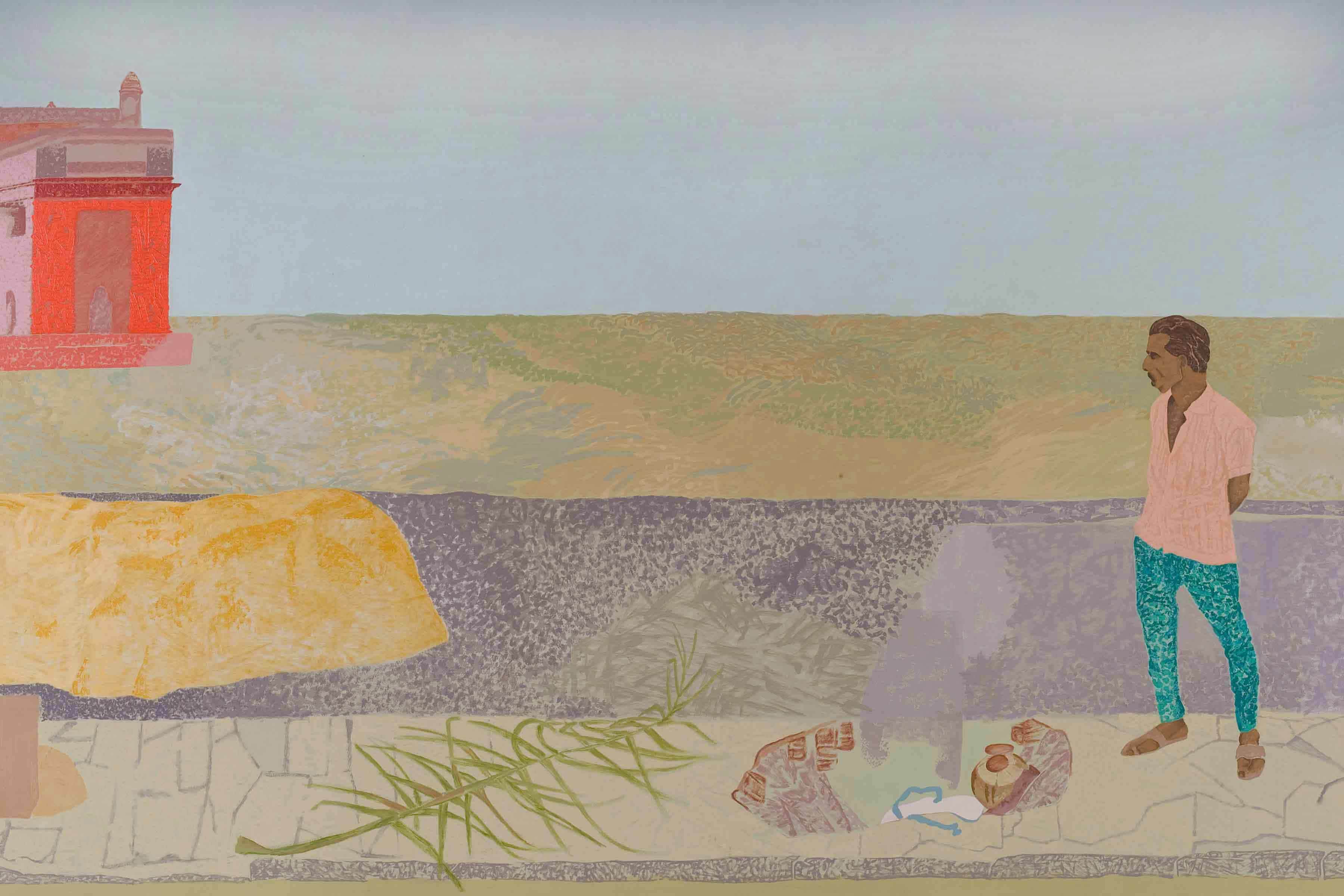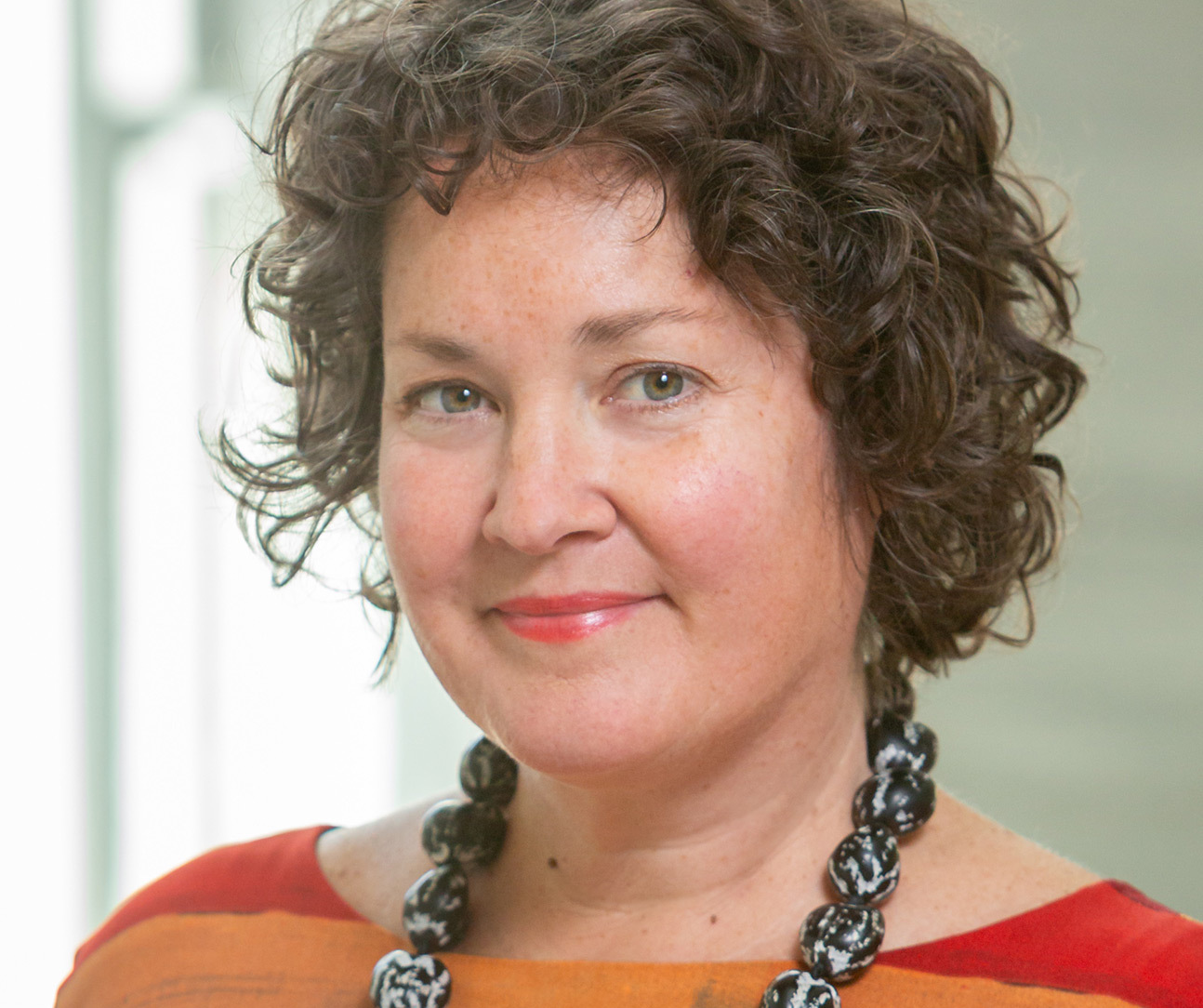If museum visitors leave PEM’s new South Asian galleries with more questions than answers, then they’ve had the experience Siddhartha V. Shah, PEM’s Director of Education and Civic Engagement, and Curator of South Asian Art, set out to create.
“I want to complicate preconceptions and make people uncomfortable with what they don’t know,” says Shah.
Get ready to celebrate the much-anticipated opening on November 27, of three new galleries that invite us to understand and appreciate the diversity of India and its people. We begin with works that remind us of the colonial system that aimed to categorize and divide in order to conquer and control, before moving into a gallery filled with modern Indian art, examining the time after British occupation ended. Next, a special exhibition tells of one couple’s close relationship with some of India’s most prominent modern artists. In all, the story is told with more than 60 paintings and 40 more sculptures and objects, with additional letters and photographs.
Most Westerners don’t understand the India where Shah traveled yearly with his parents who raised him in a traditional Indian home. At the time Salem sea captains were traveling the globe for trade, India was becoming part of the British colonial system. Those from the West would see signs of extreme poverty and strict class distinctions and experience a multitude of languages and religions.
Shah with photographs of his relatives and ancestors. © 2018 Peabody Essex Museum. Photography by Bob Packert/PEM.


This diversity could be quite overwhelming, says Shah, which is why the British tried to control and classify their Indian subjects. “We’re giving people what they know and showing them that it’s often based on tropes through a colonial lens,” says Shah “These stereotypes persist today. It’s still what people think of when we think of India.”
Hanuman revealing Rama and Sita in his Heart, mid-19th to early 20th-century. © 2020 Peabody Essex Museum. Photo by Kathy Tarantola/PEM.
South Asian artists have been dealing with questions about their identity for centuries. They perpetuated these stereotypes, creating art for Western markets in an attempt to explain this diverse and hugely populated nation.
Visitors to PEM’s new Prashant H. Fadia Foundation and Deshpande Foundation Gallery will see a selection of objects from PEM's extensive collection of historical material from India. Examples include: tiny gouache paintings on sheets of mica of people working in different occupations, life-size clay sculptures of religious men and papier-mache heads of Indian men that fit in the palm of your hand, marked with Smallpox scars on their faces.

“It’s problematic material,” says Shah. “We are not perpetuating this. But it was a moment in time. Millions of people were reduced to sick, poor laborers. They were seen as needing colonial intervention to keep them in check.”

Moving into the Chester and Davida Herwitz Gallery, visitors will see India grappling with its identity, post Partition when the country was split into modern-day India and Pakistan, and later Bangladesh. More than 60 works from PEM’s Herwitz Collection will be on display. This is the most important collection of Indian art from colonial times to the present, outside of India.
The Worcester couple began collecting the paintings, which had been exhibited during the 1971 San Paulo biennial, says Shah, when M.F. Husain and Pablo Picasso were the only artists offered their own private exhibition space. Husain is well represented in this installation of modern artists grappling with swift societal and cultural change.

Also on view next to the Herwitz Gallery, will be an archive of correspondence from the Phillips Library Collection. Through the words of these artists, revealed in letters largely from the 1980s, we learn about the relationship the couple had with South Asian artists of diverse backgrounds. Auction catalogs from Sotheby’s also show us the first sales of modern Indian art in a major auction house, all from the Herwitz Collection. Included is a collage of personal photographs of the couple in India as they worked to usher these works onto the global stage.
In the installation, the works from the Herwitz collection, gifted to PEM in 2001, are divided into five sections that look at the process of building a nation, conflicts and consequences of independence, spirituality, women revolutionaries, and India's relationship with the world. They represent a time when Indians can finally visualize themselves as who they are, other than “souvenirs to collect and display,” says Shah. “They are really struggling with who they are as a people.”
This struggle is depicted in Husain’s rendering of an epic battle, The Mahabharata. A digital frieze that tells the story of the battle between two factions of the same family, brother against brother and cousin against cousin. Husain looked at the myth as a metaphor for Partition. If any of these concepts of identity and inclusion seem all too familiar to Americans today, Shah says that is no accident.
“India, like other parts of the world, is going through a bit of a crisis,” says Shah. “It doesn't know how to hold all the diversity that is its nature.” The original vision of India was of unity in diversity, says Shah, much like the United States. But the reality today is a greater feeling of division. “As an institution outside of India with this collection of modern Indian art, we have a responsibility to have conversations about things that might not be had inside India,” says Shah. “We have to be a leader and an ambassador, globally, for conversations that are kind of being kept under wraps.”
PEM's new South Asian Art Galleries open on November 27.
A team of PEM staff prepare the South Asian galleries. Photography by Kathy Tarantola/PEM.
Keep exploring
Press Release
PEM Appoints New Curator of Indian and South Asian Art

Blog
The vast unknown
5 Min read

PEMcast
PEMcast 16: Creative Constraint
17 min listen

Exhibition
South Asian Art
Ongoing







